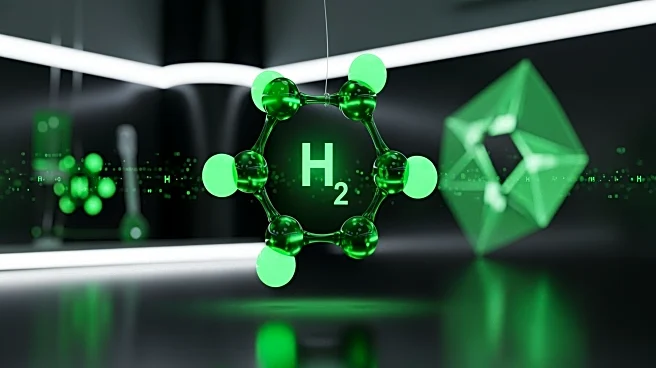What's Happening?
MIT engineers have developed a new ultrasonic device that can rapidly extract drinking water from the air, even in dry regions. This device uses ultrasonic vibrations to shake moisture loose from sponge-like
materials that absorb humidity. Unlike traditional methods that rely on solar heating and can take hours or days, this new approach releases water within minutes. The device requires a power source, which could be supplied by a small solar cell, allowing it to operate automatically when enough water is accumulated. This innovation is seen as a significant step towards practical air-to-water systems, particularly beneficial for desert regions lacking freshwater and saltwater resources.
Why It's Important?
The development of this ultrasonic device is crucial as it offers a faster and more efficient method of atmospheric water harvesting, which could provide a reliable source of drinking water in arid regions. This technology has the potential to address water scarcity issues, especially in areas where traditional water sources are unavailable. By improving the efficiency of water extraction, this device could significantly impact communities that struggle with access to clean water, enhancing their quality of life and supporting sustainable development. The ability to harvest water from the air could also reduce dependency on existing water infrastructure, offering a decentralized solution to water access.
What's Next?
The next steps involve further testing and optimization of the device to ensure its practical application in various environments. Researchers may explore integrating this technology into larger systems for community use, potentially revolutionizing water access in remote and dry areas. Collaboration with industries and governments could facilitate the deployment of this technology on a wider scale, addressing global water scarcity challenges. Additionally, ongoing research may focus on enhancing the device's efficiency and reducing costs, making it accessible to more communities worldwide.
Beyond the Headlines
This innovation could lead to broader implications in environmental sustainability and resource management. By providing a new method of water extraction, it may influence policies related to water conservation and usage. The technology could also inspire further research into other atmospheric resource harvesting methods, potentially leading to breakthroughs in energy and food production. Ethically, it raises questions about equitable access to such technologies and the responsibility of developed nations to support water-scarce regions.











